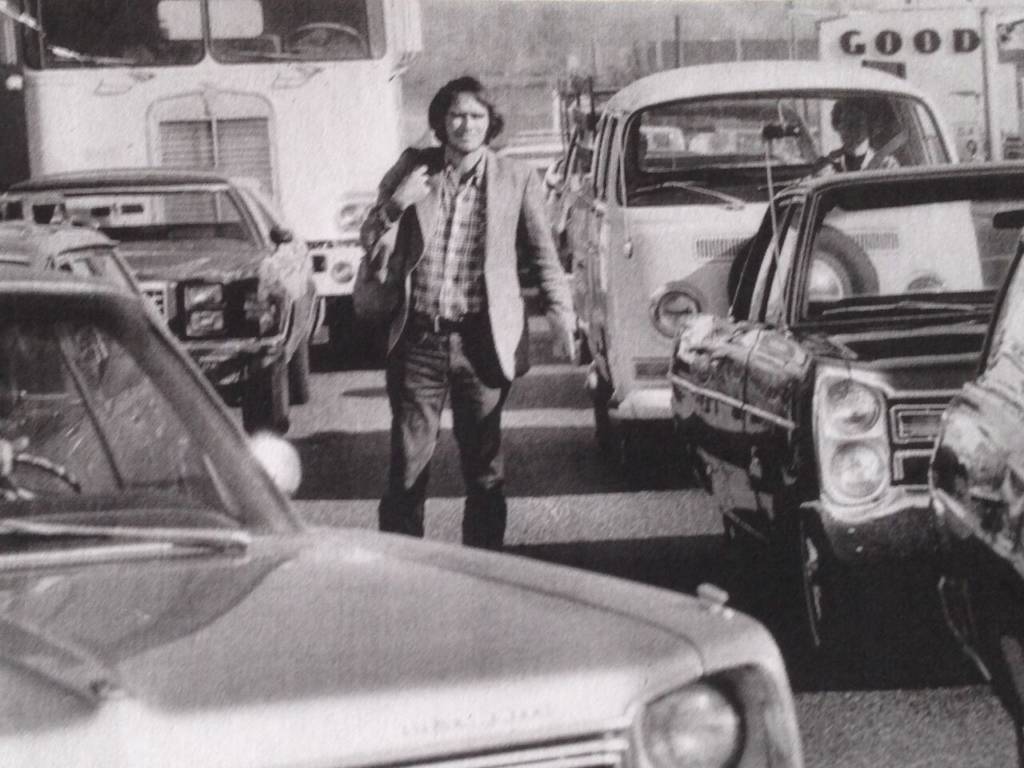It was the longest night of the year. Michael Stoops had intended it that way. On Dec. 21 of 2016, Stoops attended the 26th Homeless Persons’ Memorial Day. It would be his last.
That morning he maneuvered his wheelchair around signs bearing the names of homeless people who had passed away. As the day progressed, he lobbied, mourned and demonstrated alongside unhoused citizens. It was symbolic of who Stoops was: A minimalist who was a relentless advocate for the rights of homeless Americans everywhere and who strategized to empower people to overcome income inequality.
Michael Stoops grew up in Lawrenceburg, Indiana, a small town next to the Ohio River where he earned a degree in social work from Ball State in 1972. It was at the university that Stoops became a Quaker and developed a minimalist outlook on life. He adopted this not only in his philosophy but in his daily routines, including a dedication to walking everywhere.
Michael Stoops died after complications from a stroke in May of 2015. Julie Turner, a local social worker in D.C., recounted Stoops’ energetic walking in the eulogy she gave. “If you had the pleasure of walking with Michael — you had better be prepared to go 20 or 30 city blocks.” He could walk for miles. It allowed him to see the world as the homeless do. This Quaker-inspired approach to life made Michael Stoops a tireless advocate for the homeless.
Stoops’ fight for a living wage, affordable health care and an end to homelessness began in Portland, Oregon, in the 1970s, when his Quaker work called him there to serve. There was a need and Stoops was there to fill it. He worked with the Burnside Community Council to improve the Baloney Joe’s shelter, a center assisting young homeless patrons with food, shelter and employment assistance.
During this time Stoops was traveling between Portland and D.C. frequently to work on national advocacy initiatives. He worked with Mitch Snyder, whose very public demonstrations pushed the Reagan administration to give the Community for Creative Non-Violence a federal building to be converted to the shelter that is still operating at 2nd and D streets NW today. Snyder was the largest national figure in advocacy for the homeless. The two worked together throughout the 80s in their fight to end homelessness. Mitch was the face and Stoops the brains. Behind the scenes Stoops also helped develop the National Coalition for the Homeless from 1982-83.
In 1986, Stoops and Mitch Snyder fasted and slept on street grates, and were instrumental in pressuring Congress to pass the McKinney-Vento Homeless Assistance Act. The legislation funds Section 8 housing, food stamps and other assistance for homeless residents.
Stoops was forced to resign from the Baloney Joe’s staff in November of 1987 after being accused of sexual involvement with teenage shelter residents. Despite these allegations leading to Stoops leaving town there were no charges were made. “A small number of people in Portland who control the downtown area set out to get him,’ Mitch Snyder claimed in a 1988 Dallas Morning News article. He felt Stoops was attacked by the Portland city government, which wanted to remove Baloney Joes. Snyder recounted, “Those people recognized what was happening and believed . . . that the only way to stop it was to stop Michael Stoops.”
Stoops chose to relocate to Washington, D.C. permanently in 1988, where he continued his crusade with Snyder. They pushed the standards of living for homeless people with the “End Homelessness” rally in 1989.
In 1990, Mitch Snyder committed suicide, and Michael Stoops took up the baton of homeless advocacy alone. In 2001, he was instrumental in ending sales of “Bum Fights” videos, in which homeless people were paid to get into fist fights and do other dehumanizing acts.
Stoops spent the last twenty-seven years of his life testifying in state houses, supporting street papers that would attract attention to homeless issues (including Street Sense), attempting to classify assaults on homeless people as a hate crime and instituting the national observance of Homeless Persons’ Memorial Day.
Stoops suffered a stroke in 2015, which he struggled to recover from for the past two years. Yet, that didn’t stop him from railing against the criminalization of homelessness. And the stroke didn’t stop him from attending Homeless Persons’ Memorial Day in 2016. The longest day of the year. He wouldn’t have had it any other way.
Michael Stoops, national leader in the fight to end homelessness, died on May Day, May 1, 2017 at the age of 67.
Other Pieces Remembering Stoops
http://streetsense.org/article/from-indiana-to-dc-memories-of-michaels-journey/
http://streetsense.org/article/the-american-mother-teresa/
http://streetsense.org/article/street-sense-vendors-remember-michael/
http://streetsense.org/article/what-you-could-do-for-michael/
http://streetsense.org/article/a-champion-for-street-papers/
http://streetsense.org/article/he-kindly-stopped-for-me/
http://streetsense.org/article/my-michael-moment/




